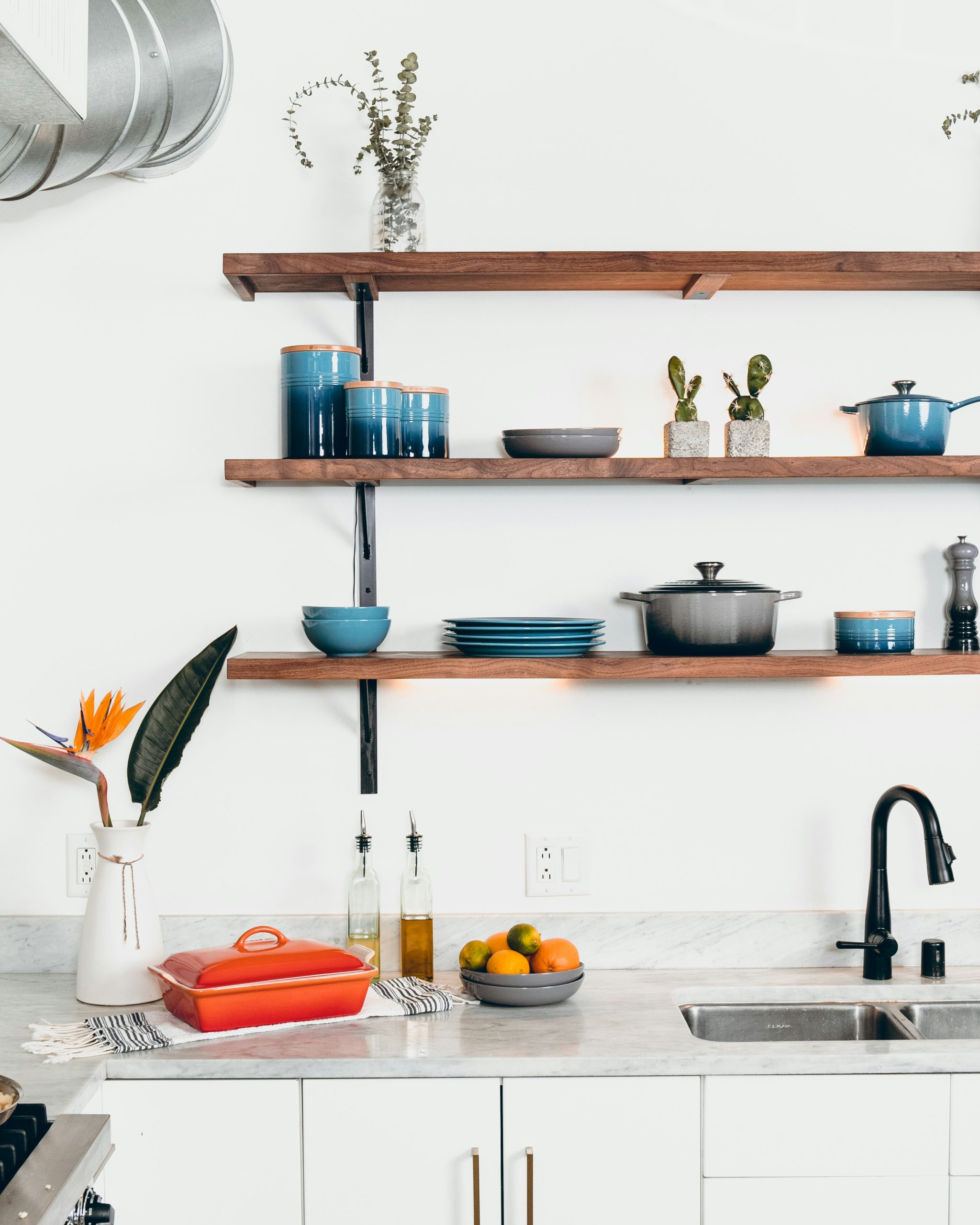Ad Blocker Detected
Our website is made possible by displaying online advertisements to our visitors. Please consider supporting us by disabling your ad blocker.
If you’re a fan of slow cooker meals, then you know just how convenient and delicious they can be. But after enjoying a hearty meal cooked in your trusty slow cooker, the dreaded task of cleaning and maintaining it may take away some of the joy. Don’t worry, we’ve got you covered! In this article, we’ll share some handy tips to make cleaning and maintaining your slow cooker a breeze, so you can continue enjoying mouthwatering meals without the hassle.

Cleaning your slow cooker
Cleaning your slow cooker is an essential part of maintaining its longevity and ensuring safe and delicious meals. By following these simple steps, you can keep your slow cooker in pristine condition for years to come.
Remove all food from the slow cooker
Before you begin the cleaning process, it’s important to remove all leftover food from the slow cooker. Carefully transfer the food into separate containers or storage bags for later use. By removing the food first, you can effectively clean the pot and lid without any obstructions.
Let the slow cooker cool down before cleaning
Once you have removed all the food, allow the slow cooker to cool down completely before you start cleaning it. Cleaning a hot slow cooker can be dangerous and may cause burns. It’s best to be patient and give it some time to cool off.
Clean the removable pot and lid
The removable pot and lid are the most commonly used parts of your slow cooker, and thus, they require regular cleaning. Start by soaking the pot and lid in warm soapy water. The warm water will help to loosen any stuck-on food particles and make the cleaning process easier.
After soaking, scrub the pot and lid with a non-abrasive sponge. Be gentle yet thorough to remove any remaining food residue. Rinse the pot and lid thoroughly with clean water, ensuring that no soap residue remains.
Clean the outside of the slow cooker
While the removable pot and lid are the primary focus of cleaning, you shouldn’t neglect the outside of the slow cooker. Unplug the slow cooker and let it cool before wiping the exterior with a damp cloth. For tougher stains, you can use mild soap and water to remove them gently. Remember to dry the outside of the slow cooker afterward to prevent any moisture buildup.
Dry all the parts thoroughly
After cleaning all the parts, it’s crucial to dry them thoroughly before storing or using the slow cooker again. Use a clean, dry cloth or towel to remove any excess water. Ensuring that everything is completely dry will prevent any potential mold or rust from forming.
Cleaning the removable pot and lid
The removable pot and lid require special attention as they come into contact with the food directly. Follow these steps to clean them effectively.
Soak the pot and lid in warm soapy water
Start by filling your kitchen sink or a large basin with warm water and adding a few drops of mild dish soap. Submerge the pot and lid in the warm soapy water, making sure they are fully covered. Let them soak for about 15-20 minutes to loosen any stuck-on food.
Scrub the pot and lid with a non-abrasive sponge
After soaking, take a non-abrasive sponge and gently scrub the pot and lid. The non-abrasive sponge will ensure that you don’t scratch the surface of the pot or remove any non-stick coating. Pay special attention to any stubborn food particles and scrub until they are completely removed.
Rinse the pot and lid thoroughly
Once you have scrubbed away all the residue, rinse the pot and lid thoroughly with clean water. Make sure there is no leftover soap or suds. You can use a faucet or a clean basin filled with fresh water for rinsing.
Dry the pot and lid completely
After rinsing, use a clean, dry cloth or towel to dry the pot and lid. Pay attention to any crevices or corners to ensure there is no moisture left. Once completely dry, you are ready to use the pot and lid again or store them for later use.
Cleaning the outside of the slow cooker
The outside of the slow cooker may accumulate some grease or residue over time. Follow these steps to keep the exterior of your slow cooker clean.
Unplug the slow cooker and let it cool
Before cleaning the outside of the slow cooker, ensure that it is unplugged and has completely cooled down. This step is essential for your safety as well as to prevent any damage to the slow cooker itself.
Wipe the outside of the slow cooker with a damp cloth
Start by wiping the outside of the slow cooker with a damp cloth. This will remove any surface-level dirt or residue. Be sure to wring out the cloth well to avoid excessive moisture on the surface of the slow cooker.
Use mild soap and water for tough stains
If there are any stubborn stains or residue on the outside of the slow cooker, you can use mild dish soap and warm water to clean them. Apply a small amount of soap to the cloth and gently scrub the stained areas. Avoid using any abrasive cleaners or scouring pads, as they may scratch the surface.
Dry the outside of the slow cooker
Once you have cleaned the outside of the slow cooker, dry it thoroughly with a clean, dry cloth. This will prevent any water spots or streaks from forming on the surface. Additionally, drying the slow cooker will prevent moisture from seeping into the internal components.
Removing tough stains and odors
Occasionally, you may encounter tough stains or lingering odors in your slow cooker. Here are some effective methods to tackle them.
Use baking soda and water paste for stains
If you come across stubborn stains in your slow cooker, a baking soda and water paste can work wonders. Mix equal parts of baking soda and water to create a thick paste. Apply the paste to the stained area and let it sit for a few minutes. The baking soda will help to loosen the stain, making it easier to remove.
Scrub the stain gently with a non-abrasive sponge
After letting the baking soda paste sit, take a non-abrasive sponge and gently scrub the stained area. The paste, combined with gentle scrubbing, should remove most stains. Be careful not to scrub too hard, as this may damage the surface of the slow cooker.
Use white vinegar to remove odors
If your slow cooker has stubborn odors, white vinegar can be a great solution. Fill the slow cooker with a mixture of equal parts water and white vinegar, making sure to cover the affected area. Let it sit for a few hours, allowing the vinegar to neutralize the odors.
Rinse the slow cooker thoroughly
After using any of the above methods, be sure to rinse the slow cooker thoroughly to remove any residue. Use clean water and wipe the interior with a cloth to ensure that all traces of the cleaning agent are removed.

Maintaining your slow cooker
Proper maintenance is key to extending the lifespan of your slow cooker. Follow these tips to keep your appliance in top shape.
Read the manufacturer’s instructions
When you first purchase a slow cooker, it’s important to read and understand the manufacturer’s instructions. Familiarize yourself with the specific features and cleaning guidelines provided by the manufacturer. This will ensure that you handle and care for your slow cooker correctly.
Use the correct temperature settings for different recipes
Different recipes require different temperature settings. Follow the recipe instructions and select the appropriate temperature setting on your slow cooker. Using the correct setting ensures that your meals are cooked properly and reduces the risk of any damage to the appliance.
Avoid overfilling the slow cooker
It is essential not to overfill your slow cooker. Overfilling can cause the food to cook unevenly, and may even result in liquid overflowing onto the heating element. To prevent any potential issues, fill the slow cooker no more than two-thirds full.
Do not immerse the base of the slow cooker in water
When cleaning your slow cooker, remember to never immerse the base in water. The base contains the heating element and electrical components, and submerging it could cause irreversible damage. Instead, focus on cleaning the removable parts and wiping the base with a damp cloth.
Store the slow cooker properly
When not in use, store your slow cooker in a cool and dry place. Choose a location where it won’t be at risk of getting bumped or knocked over. Storing it safely will protect it from potential damage and ensure it stays ready for use.
Check the power cord for any damages
Regularly inspect the power cord for any signs of damage such as fraying or exposed wires. If you notice any issues, discontinue use and contact the manufacturer for repairs or replacement. Using a damaged power cord can be hazardous.
Replace any damaged parts
If any part of your slow cooker becomes damaged or malfunctioning, it’s crucial to replace it promptly. Continuing to use a slow cooker with faulty components can compromise the quality of your food and pose a safety hazard.
Tips for prolonging the lifespan of your slow cooker
Follow these additional tips to extend the lifespan of your slow cooker and ensure optimal performance.
Avoid sudden temperature changes
Avoid subjecting your slow cooker to sudden temperature changes. Extreme temperature shifts can cause the pot or lid to crack or warp. Allow the slow cooker to cool down naturally before exposing it to cooler temperatures or vice versa.
Handle the removable pot and lid with care
The removable pot and lid are fragile and should be handled with care. Avoid dropping them or subjecting them to rough treatment. Mishandling can cause chips, cracks, or breakage, compromising their functionality.
Do not use metal utensils inside the slow cooker
Using metal utensils inside your slow cooker can scratch the non-stick coating, making it less effective over time. Instead, opt for wooden, silicone, or nylon utensils when stirring or serving food.
Avoid scratching the non-stick coating
To maintain the non-stick coating, avoid using any abrasive cleaners, scouring pads, or harsh chemicals. These can scratch the coating, rendering it less effective. Instead, opt for gentle cleaning methods such as soaking and scrubbing with a non-abrasive sponge.
Avoid using harsh chemicals for cleaning
When cleaning your slow cooker, stick to mild dish soap, baking soda, white vinegar, or other gentle cleaning agents. Harsh chemicals can damage the materials and affect the performance of your slow cooker.

Frequency of cleaning
Regular cleaning is necessary to maintain the performance and hygiene of your slow cooker. Follow these guidelines for the frequency of cleaning.
Clean the slow cooker after every use
After each use, it’s important to clean the slow cooker to remove any food residue and prevent the buildup of bacteria. Cleaning after every use ensures that your slow cooker is ready for the next cooking session.
Deep clean the slow cooker once a month
In addition to regular cleaning after each use, it’s recommended to give your slow cooker a deep clean once a month. This involves thorough cleaning of all the components and removing any stains or lingering odors.
Clean the outside of the slow cooker regularly
While the interior of the slow cooker may require more frequent cleaning, don’t forget to clean the outside regularly as well. This will prevent the accumulation of grease or dirt and keep your slow cooker looking presentable.
Additional tips and precautions
Here are some additional tips and precautions to keep in mind when using and cleaning your slow cooker.
Always unplug the slow cooker before cleaning
Before starting the cleaning process, make sure to unplug the slow cooker from the power source. This will prevent any electrical accidents or shocks while cleaning.
Never submerge the base of the slow cooker in water
As mentioned earlier, the base of the slow cooker contains electrical components and should never be submerged in water. Avoid any contact with liquids to prevent damage and electrical hazards.
Do not use abrasive cleaners or scouring pads on the pot and lid
When cleaning the pot and lid, stick to non-abrasive sponges and mild cleaning agents. Abrasive cleaners or scouring pads can scratch the surface and compromise the non-stick coating.
Do not use the slow cooker if it has any damages or electrical issues
If your slow cooker has any damages or electrical issues, it’s important not to use it. Using a faulty appliance can pose a safety risk. Instead, contact the manufacturer or a qualified professional for repairs or replacement.

Conclusion
Regularly cleaning and maintaining your slow cooker is crucial for its longevity and safe usage for delicious meals. By following the cleaning steps outlined in this article, you can ensure that your slow cooker remains in optimal condition, producing mouthwatering dishes for you and your loved ones. Remember to read the manufacturer’s instructions, use the correct temperature settings, and handle the removable parts with care. With proper care, your slow cooker will continue to serve you well for years to come. Happy cooking!

